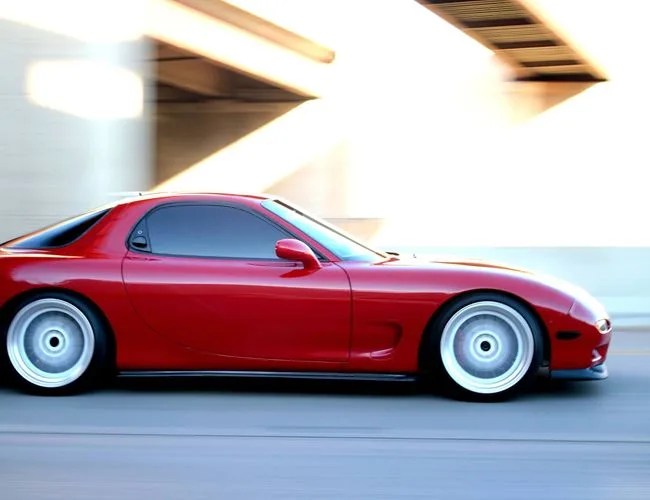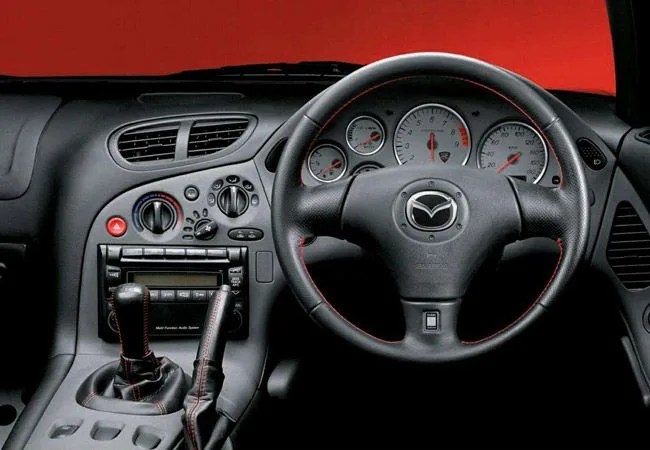Back in what seems like another automotive era, Japan used to make some truly great sports cars, like the Toyota MR2 and Supra, the Honda Prelude, the Nissan 300ZX and, of course, the beloved Mazda RX-7. The third-generation FD RX-7 stands out as iconic not just for its sublime design, but also for its sporting capabilities and the adoration it garnered from driving purists. Of all the Japanese sports cars on the stage in the 1980s and 1990s, only one was powered by a Wankel rotary engine, a revolutionary and controversial choice for a modern automotive powertrain. Through three generations of the car, the RX-7 kept the rotary engine, and the car kept on improving in power, performance and design — and the FD was the culmination of all developments.
What It’s All About
By the time the third-generation car bowed, the RX-7 was already a cult favorite and had the makings of an automotive legend. The FD clinched that status. The size and positioning of the RX-7’s rotary engine allowed for excellent weight distribution and a low center of gravity, lending to great handling, but the FD took that baseline and increased power, improved driving dynamics and offered a proper sports car look. The exterior design of the first-generation FB looked clean, but it lacked drama. The second-generation FC looked like a poor man’s Porsche 944. But the third-generation FD, made by designer Yoichi Sato, was utterly curvaceous, tip to toe, without looking cluttered.
Though flip-up headlights generally look antiquated, the low profile quad versions on the FD work. They barely rise out of the sculpted hood, not detracting from the overall fluidity, even when deployed. The rounded hood is mildly dramatic, while the swoopy profile, which includes door handles integrated into the window trim and small, crisp fender vents, represents excellent execution of overall automotive vision. Front and rear overhangs are barely noticeable, giving the FD a powerful, compact look. Even the spoiler and taillights are tasteful and tight.
The experience of driving the FD RX-7 was also nothing short of fulfilling. It was raw, fast, thirsty for petrol and fantastically rewarding. For a turbocharged car, it was ahead of its time, and the perfect 50/50 front-rear weight distribution and low center of gravity made it rapier-like in turns.


